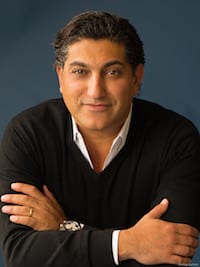
The buy side has been steadily incorporating tasks and functions that it used to rely on the sell side for, and this dynamic will become more pronounced in the future.
“Given that these capabilities have been proven at some of the largest and most progressive buy-side shops, this trend will only pick up steam,” said Alfred Eskandar, CEO of trading systems provider Portware. “The buy-side conversations have turned into buy-side initiatives, which is turning into more proven examples for other institutions to follow suit.”
Institutions representing more than $3.5 trillion “have partnered with us to customize trading solutions across multiple asset classes this year alone,” Eskandar said. “The implementations have proven to be effective in reducing costs, increasing efficiency and scale, while enhancing the trader’s experience and performance.”

Alfred Eskandar, Portware
Under a technology initiative with Portware for equity-listed derivatives, Deutsche Asset & Wealth Management is deploying “next-generation” smart order routing in order to be able to trade more intelligently. It has created a trading ecosystem that encompasses automated trading, algorithms, smart-order routing, and its own sales traders.
“It’s a global enterprise install, so we will be their hub for analytics and dealing across asset classes across the globe,” Eskandar said. “What it does is provide the single-platform benefits of efficiency, cost, risk controls. This enables each firm to measure the benefits of the technology in hard dollars.”
Deutsche Asset and Wealth Management, Invesco and other firms “all have a common denominator, and that is global multi-asset trading needs requiring technology to conform to their best practices, versus the other way around,” he said.
At Fidelity Investments, the overarching goal on its trading desk is to implement investment ideas on behalf of portfolio managers to get the best possible prices for fund shareholders. It does this in a way that provides high levels of service back to portfolio managers and analysts, and builds scale and maximizes efficiency, according to Bill Baxter, head of global program trading and market structure at Fidelity.
All this is being driven by the trend toward more electronic trading as markets evolve. “We trade globally in every equity market in the world, and depending on the market structure,” Baxter told Markets Media. “As this happens, brokers develop algorithms which are passed along to us as a toolkit to access the marketplace.”
The way that Fidelity interacts with The Street and with brokers, i.e. how it accesses liquidity, is changing. As it analyzes its own activity, it’s “applying a quantitative approach to using broker’s algorithms as toolkits, while trying to build scale and become more efficient,” said Baxter. “Brokers are solving a very similar equation with their own businesses – they are managing costs and trying to build scale and operate more efficiently. They are also re-positioning their businesses for potential regulatory changes.”
An example of a recent trend is that many investment banks are moving toward a central risk book, which is a mechanism that brings in all forms of their liquidity, said Baxter. Whether it is their proprietary trading or their customer trading, they manage it through a single process, which makes sense for them because it’s more efficient and it allows them to net down or reduce risk.
“For us, the benefit is that we are able to interact with that liquidity and pass along better pricing for our fund shareholders,” Baxter said.
If, for example, Fidelity were to trade 100,000 shares of a stock, with The Street is going to take the other side, “instead of just managing the risk associated with that stock, they have a $1 billion risk book behind the scenes,” said Baxter. “Fidelity buying or selling 100,000 shares probably doesn’t incrementally add to that risk – in fact, it may help their risk position. So they can give us better pricing on the trade.”
A second example would in the area of actionable IOI’s. Many brokers are now making IOI’s actionable, or tradable on the screen without the need for a phone call. “This is another option that allows our traders to work more efficiently and interact with broker liquidity in a new way,” said Baxter.
Looking ahead, “we’ll continue to improve our technology, and measure results in our processes and our own order flow,” Baxter said. “We’ll remain focused on continually getting better as we execute investment ideas on behalf of our portfolio managers and seek the best possible prices for our fund shareholders.”
As more buy-side institutions adopt the mindset of empowerment, the idea is invariably spreading to others. “The theory of being able to do all of this is now a reality, and it’s a reality being taken by some of the biggest shops,” said Eskandar, “which makes other firms more confident in pursuing similar solutions.”





